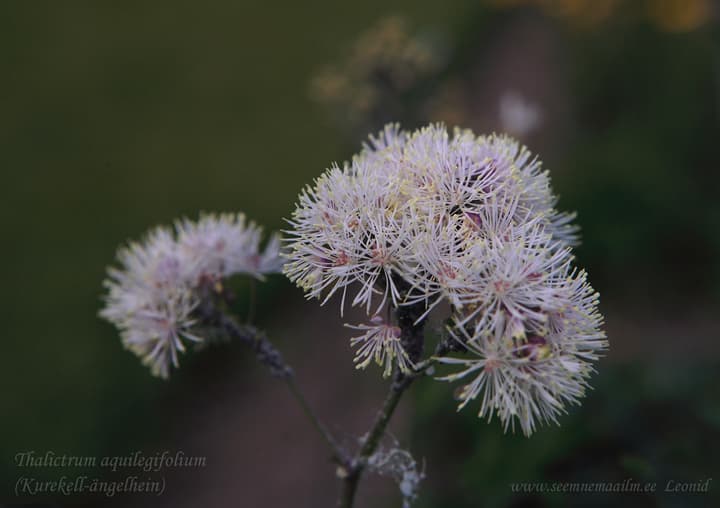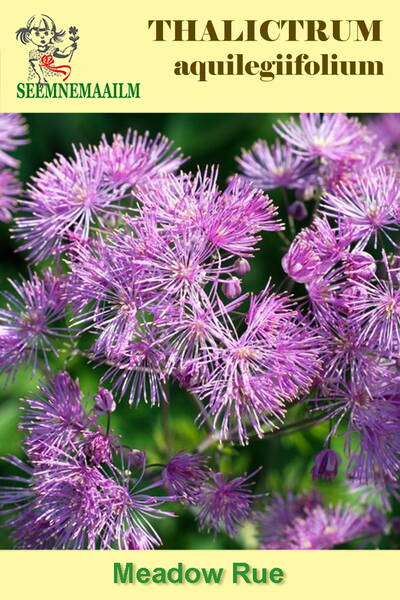Ex Tax: 1.35€
A perennial from the Ranunculaceae family.
An impressive architectural plant with dozens of delicate flowers and foliage resembling that of Aquilegia (columbine).
Main flower colors: white, cream, pink, and salmon.
Height of flowering plant: 120 cm.
Natural flowering period: May – July.
Growth type: upright.
Hardiness zones: Z5 – Z8.
Soil requirements: moist, moderately fertile soil.
Use: suitable for cutting and for winter arrangements.
1.0 g = approximately 600 seeds.

In the wild, Thalictrum aquilegifolium grows in central, southern, and southwestern parts of European Russia, as well as in Central and Southern Europe, the Balkans, and Asia Minor.
It is a perennial plant forming compact clumps up to 120 cm tall, with large, broadly triangular, bluish-green leaves. The small white or pale lilac flowers are grouped in loose, large, corymbose panicles up to 20 cm long. It blooms from June to July for 30–35 days. The fruit is a follicle. Seeds are oblong and relatively large. Fully hardy without winter protection. Can self-seed.
In cultivation, it requires the same growing conditions as columbines. It thrives in cool, moist, rich soils in partial shade or in areas with diffused sunlight. In partial shade, flowering lasts longer and the foliage remains decorative for an extended period.
Thanks to its unpretentious nature and the ornamental qualities of both its flowers and foliage, this large perennial is invaluable for moist areas, pond edges, and shady gardens. It has been in cultivation since 1720 and includes decorative forms and cultivars with white, violet, lilac-pink, and dark red flowers.
Location: Best grown in partial shade. In full sun, especially in dry weather, flower color fades by late June and may take on yellowish tones. Lack of moisture reduces flower fragrance. Hardy to frost.
Soil: While meadow rues are not demanding, they grow best in fertile, deeply cultivated, nutrient-rich soils with good moisture.
Care: Requires watering during dry periods. Dwarf species do not need pruning; T. aquilegifolium can be cut back after flowering.
Pests and diseases: Aphids may appear during dry weather.
Propagation: By division, cuttings, or seeds. Seeds can be sown outdoors before winter, or in spring after one month of cold stratification. Seedlings are hardy, grow quickly, and bloom in the second year. Clumps can be divided in late April or early September, planting 40 cm apart. Plants can grow in the same place for 10 years or more. Cuttings should be taken with a small “heel” from young shoots with partially developed leaves.
Landscape use: Large species such as T. aquilegifolium, T. flavum, T. delavayi, and T. rochebrunnianum are ideal for mixed herbaceous and shrub borders, mass plantings, or as striking solitary specimens.
Companion plants: Looks especially attractive against shrubs with dark foliage such as mahonia, shiny cotoneaster, or purple-leaved spindle tree, and alongside large-leaved perennials like rhubarb, castor bean, and ligularia. It also combines beautifully with Siberian iris, columbine, geum, globe flower (Trollius asiaticus), brunnera, astilbe, and phlox.












